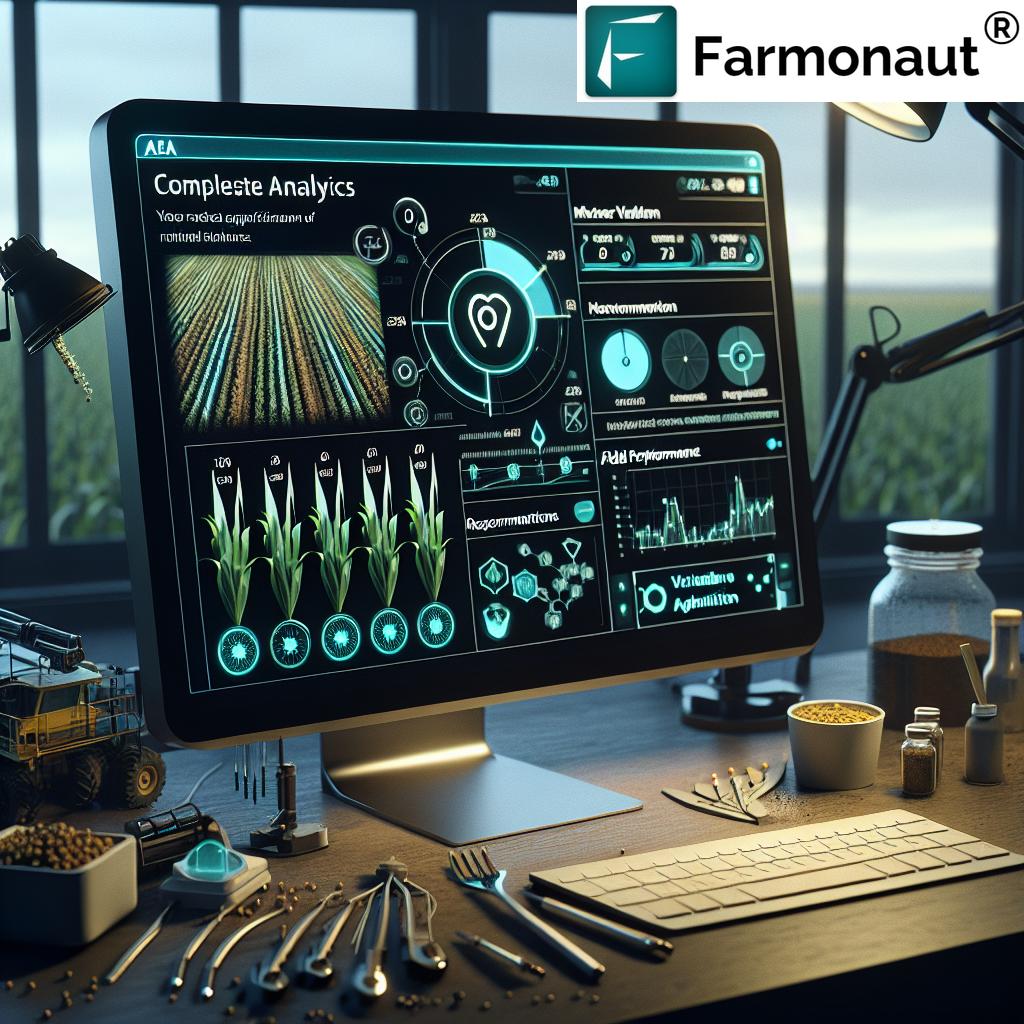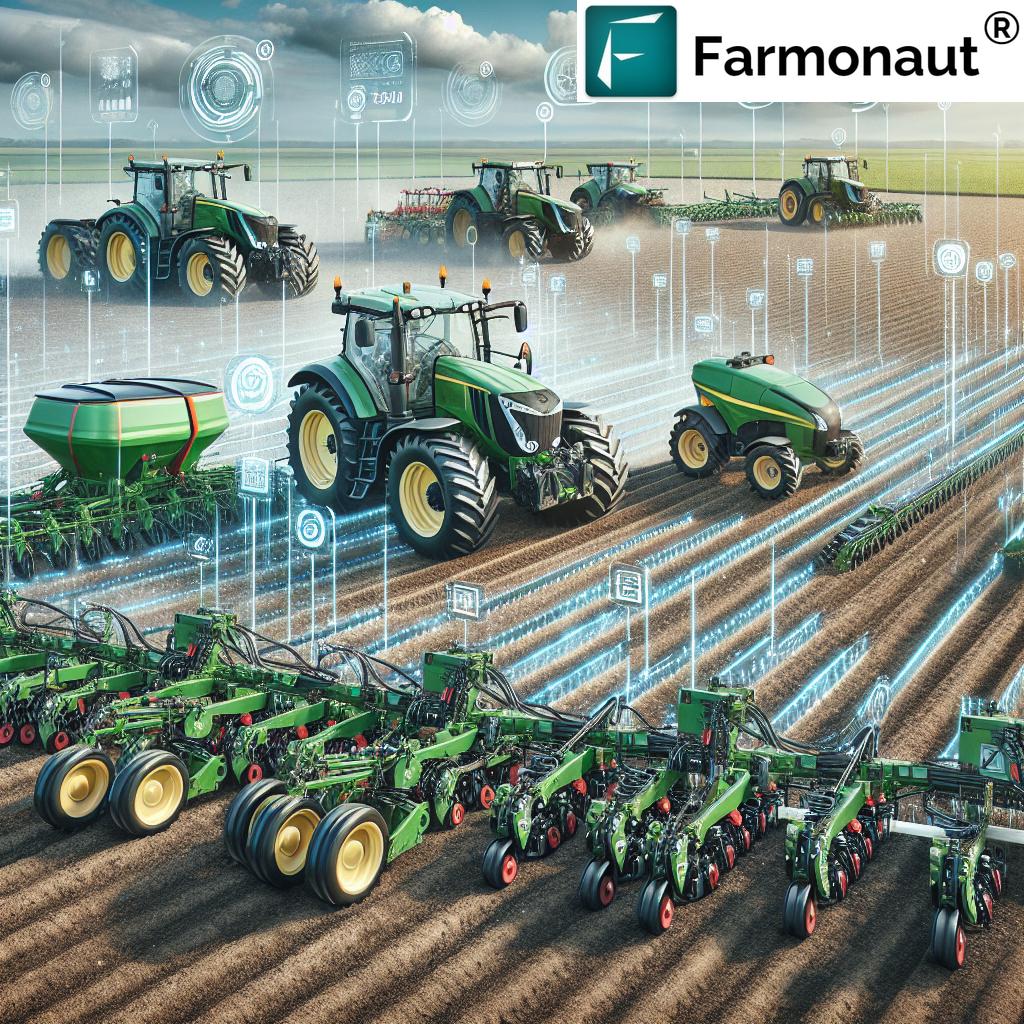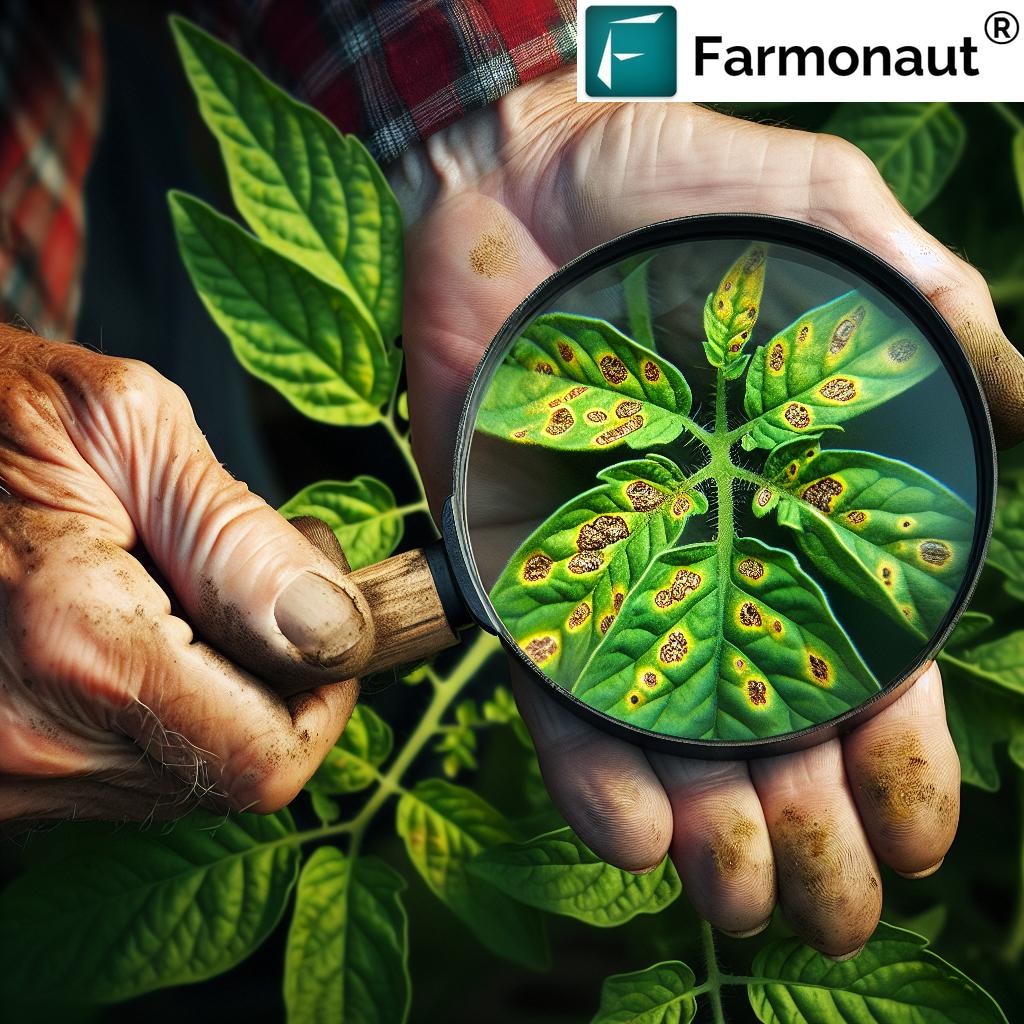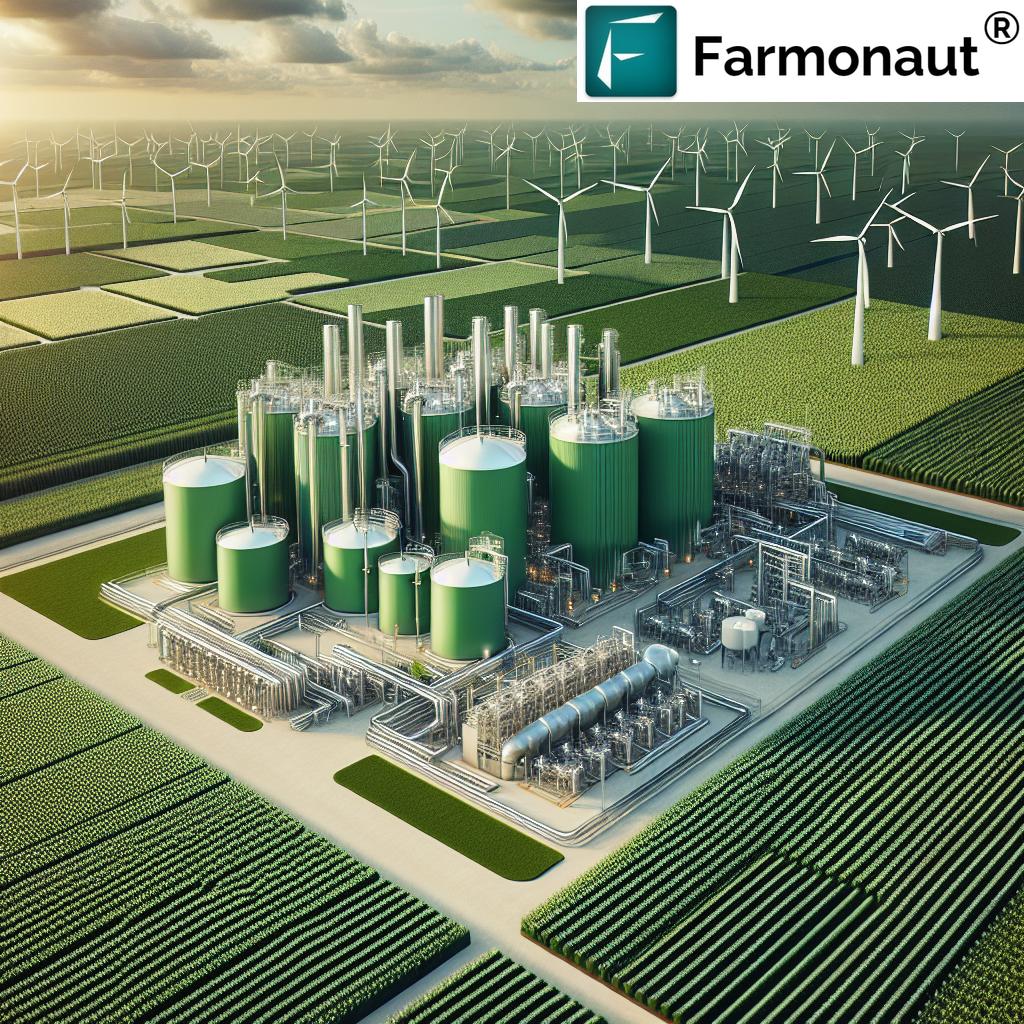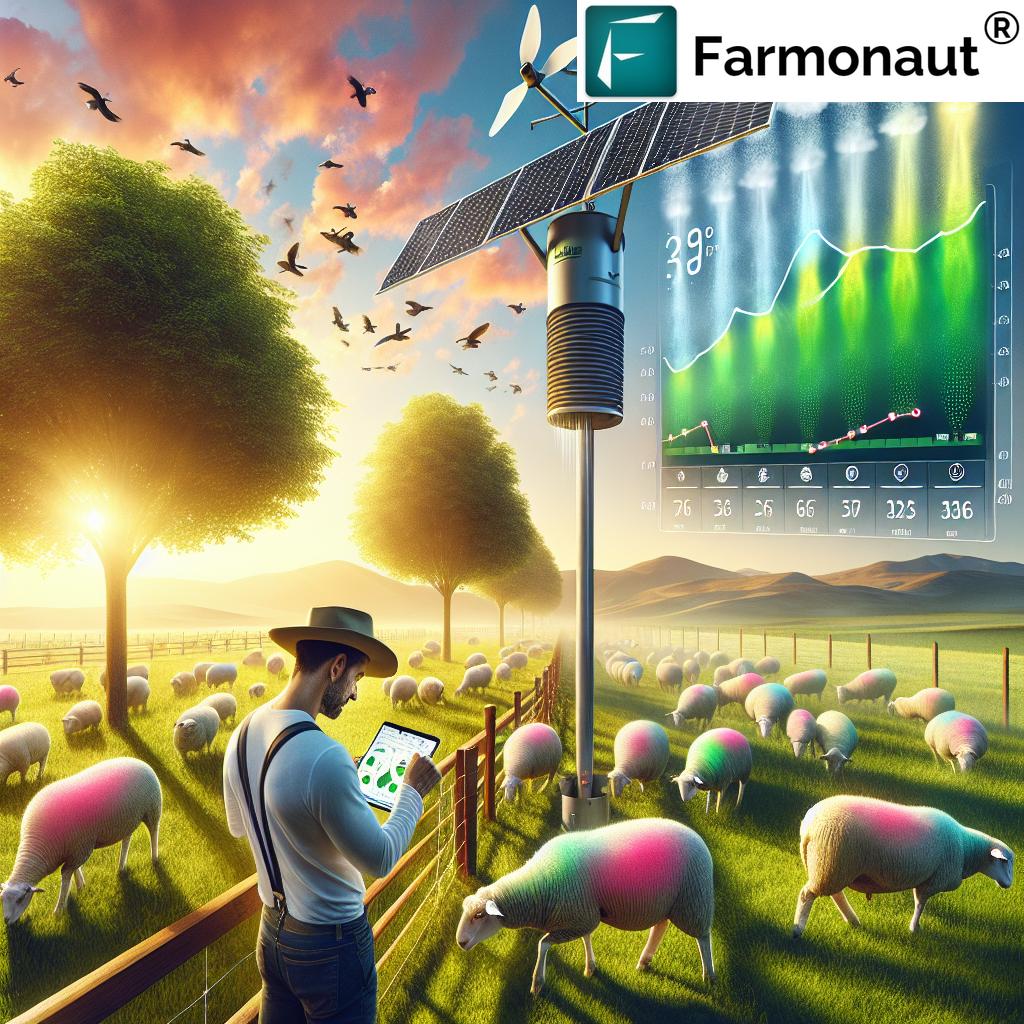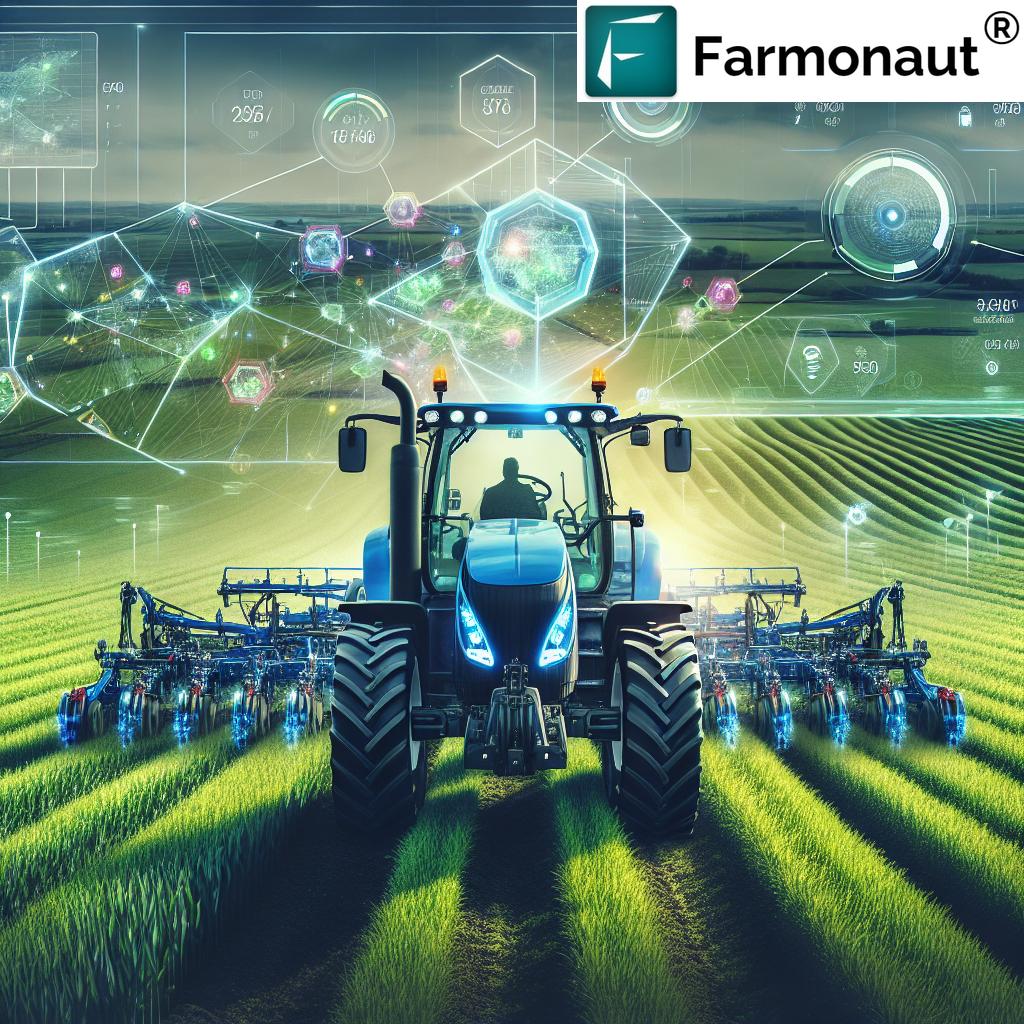Yield Monitoring: 7 Powerful Ways to Boost Farm Productivity
- Introduction: Unlocking Precision Agriculture
- Understanding Yield Monitoring in Modern Farming
- Key Components of Yield Monitoring Systems
- Benefits of Yield Monitoring
- Yield Monitoring: 7 Powerful Ways to Boost Farm Productivity
- How Farmonaut Empowers Yield Monitoring and Precision Agriculture
- Comparison Table: Yield Monitoring Technologies & Their Estimated Impact
- Technological Advancements and Emerging Trends in Yield Strategies
- Challenges & Considerations in Yield Monitoring
- Frequently Asked Questions
- Conclusion: The Future of Farm Productivity
“Yield monitoring can increase farm productivity by up to 20% through precise crop data analytics and smart field management.”
Introduction: Unlocking Precision Agriculture with Yield Monitoring
In the 21st century, agriculture is undergoing a remarkable transformation. At the heart of this revolution lies yield monitoring—a technology that empowers us, as farmers and agribusiness professionals, to collect, analyze, and act on data from every corner of our fields. No longer do we have to rely solely on intuition and visual cues. Today, guided by precision agriculture tools, GPS-driven data analytics, and smart field management systems, we can optimize farm productivity beyond traditional limits.
Yield monitoring isn’t just a buzzword—it’s a proven approach that’s helping us make smarter decisions, utilize resources more efficiently, and adapt our practices to ever-changing field conditions. Through advanced solutions such as crop yield data analytics, state-of-the-art agriculture sensors, and integrated farm management systems, we now have the power to unlock the full potential of our land.
Let’s explore what yield monitoring is, its core components, the transformative benefits, and seven powerful, actionable ways it can help us boost productivity on our farms. Our journey will also address current technologies, emerging trends, and practical considerations—using a clear, informative lens to bring every farmer, large or small, closer to the promise of precision agriculture.
Understanding Yield Monitoring in Modern Farming
At its core, yield monitoring enables us to perform real-time measurement, mapping, and recording of our crop yields as we harvest. This process utilizes specialized equipment—often integrated into combine harvesters—that captures essential parameters such as grain flow, moisture content, and even harvesting speed.
The real leap comes when we georeference this data using GPS. By mapping actual yields—spatially distributed across our fields—we gain a detailed view of variability, performance, and areas needing intervention. This spatially precise information serves as the backbone for smart field management, data-driven resource utilization, and targeted interventions.
How Does Yield Monitoring Work?
Our combine harvester collects yield data through advanced sensors while harvesting. This includes:
- Grain flow sensors measure the volume of crop passing through the machine.
- Moisture sensors check the water content of each grain batch—crucial for both yield accuracy and post-harvest processing.
- GPS receivers capture the exact location of every datapoint, enabling us to map variable yields across large fields.
And with display units in our combines, operators see real-time feedback—allowing for immediate, on-the-spot adjustments as harvest conditions change.
Clear Example:
Suppose we’re harvesting wheat across a 100-hectare field. As we move, our system logs the bushels per acre, tracks increasing moisture in low-lying sections, and notes where yields are consistently below average. Later, the yield maps generated reveal precisely which sections struggled and why, helping us plan our next planting with greater confidence.
Key Components of Yield Monitoring Systems
Modern yield monitoring systems are sophisticated, but their power comes from the seamless integration of several critical components. Let’s break down each part and see how it supports field performance monitoring:
-
Mass Flow Sensor:
Measures the volume of grain passing through the combine, providing a continuous stream of data on the harvest rate. -
Moisture Sensor:
Assesses the moisture content in real time. This is essential for accurate yield calculations and for making storage or drying decisions. -
GPS Receiver:
Georeferences every data point collected—meaning each reading is tied to a precise location within the field, forming the foundation for yield mapping technology. -
Display Unit:
Presents real-time data to the operator, facilitating immediate decision-making during harvest. This display is the command center for on-the-go optimization.
These components operate in unison, allowing us to collect and analyze a comprehensive view of our crop’s performance at every stage of the harvest process.
Benefits of Yield Monitoring & Precision Agriculture
The adoption of yield monitoring systems and data-driven management tools brings a cascade of advantages to our farm operations:
- Informed Decision-Making: With real-time crop yield data analytics, we make evidence-based decisions for resource allocation, input usage, and operational adjustments.
- Identification of Variability: Yield maps reveal areas of both high and low productivity within fields, helping us identify factors limiting yields (e.g., pests, poor soil, drainage) and target improvements where needed.
- Optimization of Inputs: Understanding spatial variability allows for variable rate applications of inputs (fertilizers, pesticides, irrigation), reducing waste and improving efficiency.
- Improved Profitability: Enhanced management practices, driven by real data, can boost our overall yields while cutting input costs, resulting in tangible increases in profit margins.
- Comprehensive Field Assessment: We can assess the true performance of every field—down to the square meter—enabling precise interventions rather than one-size-fits-all solutions.
- Year-on-Year Benchmarking: Historical data empowers us to track improvements over multiple seasons, adjusting practices and maximizing long-term field performance.
Yield Monitoring: 7 Powerful Ways to Boost Farm Productivity
Unlocking higher yields and maximizing productivity is every farmer’s goal. Through a fusion of real-time monitoring, advanced analytics, and targeted management, here are seven actionable strategies to transform our yields:
-
1. Targeted Variable Rate Application (VRT)
Variable Rate Technology (VRT) allows us to tailor the application of fertilizers, pesticides, and irrigation to the specific needs of each part of our field. With precise spatial data from yield monitoring, we can identify low-performing zones that need more attention and avoid overapplying resources where they’re not needed.
Benefit: Reduces waste, saves money, and protects the environment, all while optimizing crop yields.
Learn more about how Farmonaut addresses resource precision at Large Scale Farm Management. -
2. Real-Time Crop Health Assessment & Early Intervention
When we analyze yield patterns in tandem with live environmental data (e.g., from satellite-based crop health indices), it becomes easier to spot areas experiencing crop stress or disease. Early identification, facilitated by farm management systems and NDVI crop monitoring, allows for quick action—be it targeted spraying, additional irrigation, or pest control.
Explore Farmonaut’s real-time crop health platform at Crop Plantation Forest Advisory. -
3. Year-on-Year Performance Benchmarking
With each season, yield monitoring technologies help us build a powerful database of field performance. By comparing annual yield maps, we can track improvements or spot persistent problem areas. This data-driven benchmarking guides long-term strategies such as rotation planning or soil amendment investments.
-
4. Informed Field Planning and Rotation Decisions
Yield mapping technology reveals which fields or zones offer the highest and lowest returns. This insight enables us to optimize planting density, adjust hybrid or variety choices, and strategically rotate crops, targeting the most suitable crop types to specific field conditions.
For smarter insurance and loan access, check out Crop Loan & Insurance Solutions. -
5. Sustainable Resource Utilization
Efficient input management isn’t just good for profitability—it’s vital for sustainability. By using satellite imagery and advanced analytics, we can monitor soil moisture and other resource metrics to minimize overuse of water or chemicals. This Eco-friendly approach aligns with both environmental and business goals.
See how Farmonaut’s Carbon Footprinting service drives sustainable agriculture. -
6. Transparent Traceability and Supply Chain Confidence
Leveraging blockchain technology with yield data, we can offer transparent proof of crop origin, inputs used, and farm practices—creating trust for buyers and consumers.
View Farmonaut’s solution for Product Traceability. -
7. Precision Machinery & Fleet Management
Yield data extends beyond crops; it informs the efficient deployment and monitoring of equipment. GPS, IoT fleet tracking, and performance analytics help us allocate machinery, schedule timely maintenance, and reduce downtime across our operations.
Boost machinery efficiency with Farmonaut’s Fleet Management Tools.
“Over 60% of farmers using yield monitoring report improved decision-making and resource allocation on their farms.”
How Farmonaut Empowers Yield Monitoring and Precision Agriculture
As a leader in agricultural technology, Farmonaut is making precision agriculture more affordable, actionable, and scalable for farmers everywhere. Let’s see how Farmonaut’s core technologies align with—and amplify—yield monitoring and optimized farm productivity:
-
Satellite-Based Crop Health Monitoring:
Farmonaut leverages multispectral satellite imagery to monitor vegetation indices (like NDVI), soil moisture, and field anomalies. This provides actionable insights directly relevant to yield mapping and intervention strategies. -
Jeevn AI Advisory System:
Personalized, AI-driven farm advice analyzes satellite data, weather trends, and recent field performance to guide us in real time—improving crop health and maximizing yield. -
Blockchain-Based Traceability:
End-to-end crop tracking increases transparency and quality assurance, supporting sustainable practices and traceability. -
Fleet & Resource Management:
GPS-, IoT-, and AI-powered analytics optimize resource utilization, reduce logistics costs, and improve the uptime of agricultural machinery for consistently high-performance operations. -
Carbon Footprinting:
Helps us monitor and lower the environmental impact of our agricultural activities—key for both regulatory compliance and field longevity. Learn more at Carbon Footprinting.
Farmonaut’s business model is accessible to all via cost-effective app subscriptions, flexible web, mobile (Android and iOS), and robust API access for tech-savvy growers. For integration support, view the API platform and developer documentation.
Comparison Table: Yield Monitoring Technologies & Their Estimated Impact
| Technology Type | Description | Estimated Yield Improvement (%) | Implementation Cost (USD) | Data Accuracy (%) | Suitability for Farm Size |
|---|---|---|---|---|---|
| Satellite Imaging (Farmonaut Platform) | Uses multispectral images for crop health, soil moisture, spatial variability, and field performance monitoring. | 10–20% | $2–10/ha/year | 85–92% | Small, Medium, Large |
| Drone Surveys | Captures high-resolution aerial images for plant health, pest, and nutrient analysis. | 12–25% | $10–50/ha/flight | 95% | Medium, Large |
| IoT Field Sensors | Fixed soil and crop sensors measure moisture, nutrients, and microclimate in real time. | 8–18% | $50–250/sensor | 98% | Small, Medium |
| Yield Monitoring on Combines | Onboard sensors (grain flow, moisture, GPS) directly record yield at harvest. | 12–22% | $1,500–12,000 (one-time) | 97% | Medium, Large |
| Cloud-Based Data Analytics | Remotely processes, analyzes, and visualizes yield and farm data for smarter decisions. | 10–18% | $5–15/ha/year | 90–95% | Small, Medium, Large |
| AI-Driven Decision Support | Machine learning analyzes big data, predicts yields, and recommends interventions. | 15–23% | $10–30/ha/year | 93–98% | Small, Medium, Large |
* Data based on market averages and expert estimates. Actual results may vary depending on crop type, environment, and technology provider.
Technological Advancements and Emerging Trends in Yield Strategies
Yield monitoring isn’t static; it’s advancing rapidly—driven by digital innovation, artificial intelligence, and the Internet of Things (IoT). Here are the latest trends we should watch as we plan for the future of precision agriculture:
-
AI and Machine Learning (Try AI-based advisory):
Big data analytics and machine learning algorithms now predict yields, analyze crop patterns, and recommend targeted interventions more effectively than ever. -
IoT Connectivity:
Smart field sensors monitor environmental factors—soil moisture, temperature, disease—and connect all our data seamlessly to centralized dashboards. -
Drone & Satellite Imagery:
Large-scale, high-resolution monitoring enables field assessment on vast farms—mapping crop health, yield variability, and stress factors weekly or even daily. -
Cloud-Based Analytics:
Remote, collaborative platforms store, analyze, and visualize data, supporting smarter, faster, and multi-device access to vital insights. -
Blockchain for Product Traceability:
Securely records each step of our crop’s journey for food safety, consumer trust, and regulatory compliance. Explore traceability options.
Challenges & Considerations in Implementing Yield Monitoring
While the benefits of yield monitoring are substantial, our journey to fully optimized farm productivity isn’t without hurdles. Key challenges every grower or agribusiness manager should consider include:
-
Sensor Calibration & Maintenance:
To ensure data accuracy, all monitoring equipment—from mass flow sensors to IoT field probes—must be regularly calibrated and well maintained. Neglect can lead to data errors, potentially affecting our decisions. -
Large Volumes of Data Management:
Yield monitoring produces huge datasets. Without proper data storage, processing tools, and analytics, it’s easy to become overwhelmed or lose track of actionable information. -
Cost of Implementation:
Initial investments for specialized equipment or new field sensors can be significant, although satellite-based and app-driven platforms (like Farmonaut) increasingly offer affordable cloud and API packages. -
Expertise in Data Interpretation:
Making the most of advanced monitoring tools requires training, expertise, or digital literacy. Misinterpretation of yield data could lead to suboptimal interventions—underlining the value of advisory platforms and support tools. -
Interoperability:
Integrating new tech with our existing machinery or management systems may demand additional investment or technical support.
By proactively addressing these challenges, we can maximize the advantages and truly enhance our field’s productivity.
Affordable Yield Monitoring & Farm Management Solutions
Farmonaut offers modular subscriptions—scalable for smallholders or large agribusinesses—to help every farmer start their data-driven journey. Plans are transparent, affordable, and come with expert support.
Frequently Asked Questions (FAQs): Yield Monitoring in Precision Agriculture
What is yield monitoring and why is it essential in agriculture?
Yield monitoring is the real-time measurement of crop yields during harvest, typically using sensors and GPS in combine harvesters. It is essential because it gives us precise data on actual production and spatial variability, informing better crop, resource, and field management decisions.
How can precision agriculture improve my yields?
By integrating precision agriculture tools like yield maps, soil sensors, and satellite imagery, we tailor interventions to the specific needs of each field zone. This leads to better input application, less waste, and significantly higher yields.
What types of technologies can I use for yield monitoring?
We can use combine-mounted sensors, aerial drones, IoT soil sensors, satellite imaging (like Farmonaut’s solutions), and cloud-based analytics platforms for yield monitoring and crop data analytics.
Are yield monitoring systems suitable for small farms?
Yes! Modern solutions—including affordable app-based and satellite-driven platforms—make yield monitoring accessible even to smallholder farms. Farmonaut, for example, offers scalable packages priced per hectare.
How does Farmonaut make precision agriculture affordable?
Farmonaut utilizes satellite technology and digital platforms, eliminating expensive on-site hardware. Subscriptions offer flexible data packages that fit the size and needs of any farm, from individual growers to large cooperatives.
Can I access my yield and crop data from mobile devices?
Absolutely. Farmonaut provides web, Android, and iOS apps for easy, real-time field monitoring, yield mapping, and data analysis—right from your phone, tablet, or desktop.
Conclusion: The Future of Farm Productivity with Yield Monitoring
Yield monitoring has established itself as the cornerstone of precision agriculture—enabling us to collect, analyze, and act on invaluable crop data. As we’ve seen, harnessing yield maps, variable rate technology, and advanced analytics empowers us to elevate our farming operations—improving yields, boosting profitability, and building a more sustainable future.
With the help of innovative agri-tech companies like Farmonaut, yield monitoring systems, and data-driven farm management, we truly unlock our farm’s full potential. Whether through satellite imagery, AI-predictive tools, secure traceability, or IoT-powered field assessment, technology is at our fingertips—no matter the size or location of our fields.
Let’s embrace this data revolution, tap into the power of digital agriculture, and sow the seeds for increased productivity, resilience, and long-term success!





